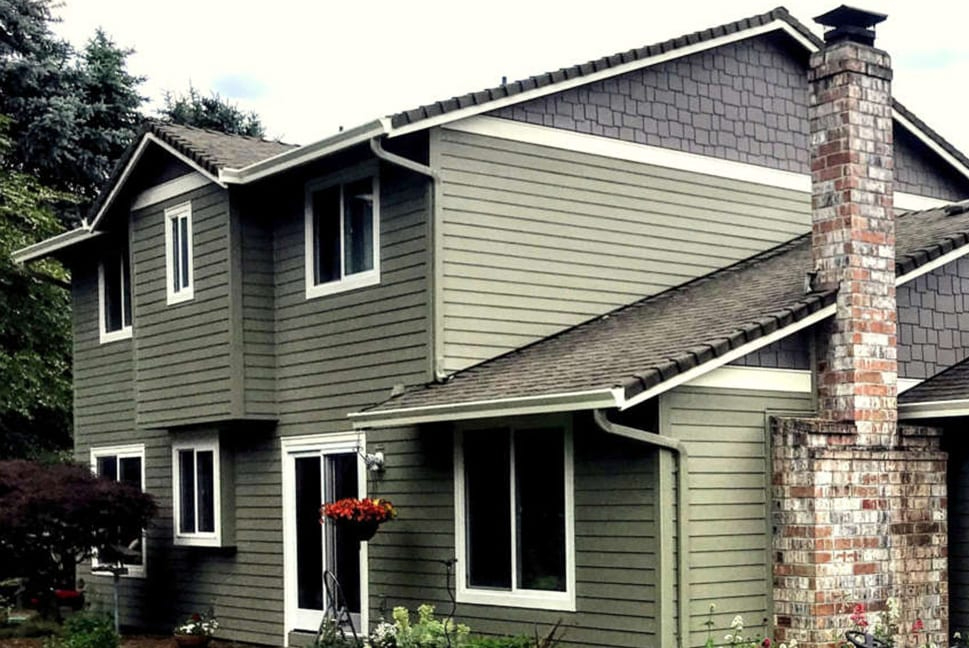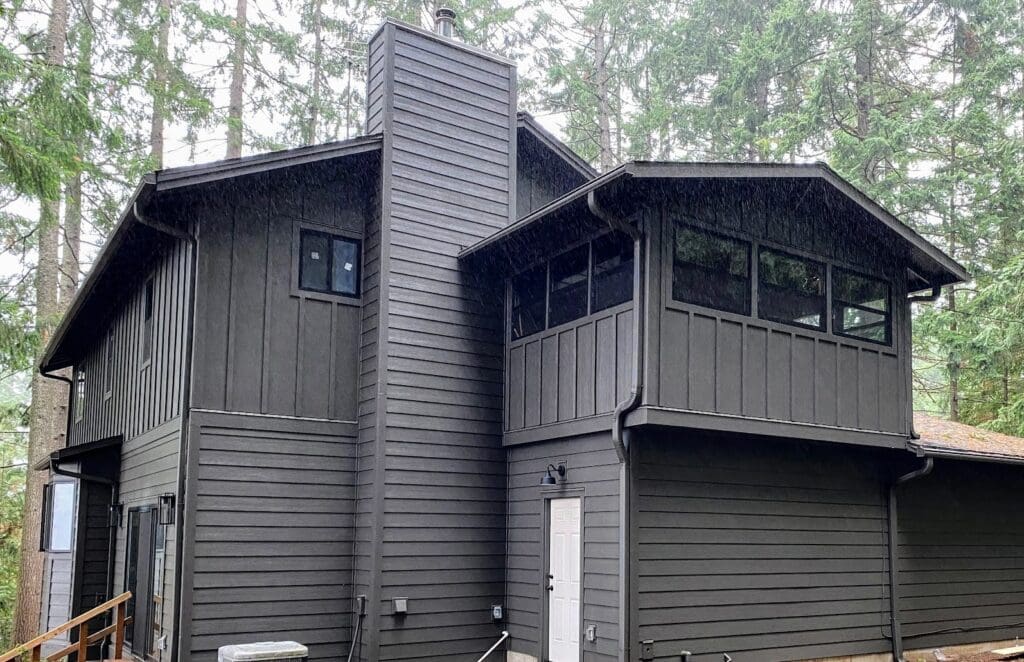Aside from the size or architecture of your home, siding will often be the first thing people notice. Its style, if it’s in good shape, and the color of your home’s siding are hard to miss. But one thing many don’t realize is the protective properties of siding and how important its protective envelope is. Energy efficient siding can be just as important as style–so how does James Hardie rank?
Good siding is essential for your home’s protection, aesthetics, and energy efficiency. Siding serves as a protective barrier against the elements, shielding your home from rain, snow, wind, and sunlight. It helps prevent moisture from seeping into your walls, which can lead to mold, rot, and structural damage over time.
Siding contributes to your home’s energy efficiency by providing insulation. Insulated siding helps regulate indoor temperatures by keeping heat inside during the winter and blocking out excessive heat during the summer. This can result in lower energy costs and a more comfortable living environment year-round.
Is James Hardie Energy Efficient Siding?
James Hardie siding is known for its exceptional energy efficiency compared to other siding materials. This fiber cement siding is engineered to provide superior insulation and thermal performance, helping to reduce energy consumption and lower utility bills. Just as the sheathing under your siding contributes to one layer of energy efficiency, the Hardie-board siding on top of it, doubles your protection and efficiency.
One key factor contributing to James Hardie’s energy efficiency is its durability and resistance to weather elements. Unlike traditional wood siding, which can warp, rot, or become damaged over time, James Hardie siding is designed to withstand extreme weather conditions such as extreme temperatures, moisture, and UV exposure. Its resistance to moisture prevents mold and mildew growth, ensuring a healthier indoor environment.
Hardiplank siding also offers excellent thermal insulation properties. It helps regulate indoor temperatures by keeping heat inside during the winter months and blocking out excessive heat during the summer. This means your home stays comfortable year-round, reducing the need for heating and cooling systems and ultimately saving you money on energy bills.
Another advantage of James Hardie siding is its low maintenance requirements. Unlike wood siding, which may require regular painting, staining, or sealing to maintain its appearance and protection, James Hardie siding is factory-finished with a durable coating that resists rot and insects and can even repel fire for periods of time.
This reduces the need for frequent maintenance and upkeep, further contributing to its energy efficiency and cost-effectiveness over time. James Hardie siding offers homeowners long-lasting solutions for energy savings.
 How Does James Hardie Siding Rank With Other Materials?
How Does James Hardie Siding Rank With Other Materials?
James Hardie energy efficient siding material stands out as a highly energy-efficient option compared to other types of siding materials like wood, vinyl, or aluminum. James Hardie siding is engineered with advanced fiber cement technology, which provides superior insulation compared to wood, insulated vinyl siding, or aluminum/steel siding.
Unlike wood siding, which can warp, rot, or become damaged over time due to moisture and pests, James Hardie siding is incredibly durable. It resists moisture, pests, and harsh weather elements, maintaining its structural integrity and insulation properties over the long term. This durability ensures consistent energy efficiency throughout the lifespan of the siding and overall energy savings.
James Hardie siding requires minimal maintenance compared to wood siding products, which often needs repainting, sealing, or staining to protect against weather damage. The factory-applied finishes on James Hardie siding resist fading, chipping, and peeling, reducing the need for frequent maintenance and preserving its energy-efficient properties.
James Hardie siding is also made from sustainable materials, contributing to a more eco-friendly choice compared to some other siding materials. It’s manufactured with responsibly sourced raw materials and is designed to last for many years, reducing the need for frequent replacements and minimizing environmental impact.
Overall, James Hardie siding offers homeowners a highly energy-efficient and sustainable siding option that provides long-lasting protection, durability, and aesthetic appeal for their homes.
Choosing the Right Siding For Your Home
Choosing the right siding material and ensuring proper installation are crucial for maximizing the benefits of siding. It’s important to consider factors such as durability, maintenance requirements, and resistance to pests and weather damage when selecting siding for your home.
Regular maintenance, such as cleaning and inspecting your siding for signs of damage, is also essential for prolonging its lifespan and preserving your home’s appearance and structural integrity. Overall, investing in good siding is a wise decision that provides long-term protection, beauty, and value for your home.
As we said earlier, installation is key. For two decades, Joseph Ketner has been installing siding on Portland Metro area homes, earning a 99% client recommendation rating. We’re also an Elite Preferred James Hardie contractor, a designation held by just one percent of the siding installers in the country.
So when you work with us, know you’re working with a company appreciated not only by our clients, but also one of the most popular siding manufacturers in America. We work efficiently and with experience and leave your home looking great and well-protected from the elements.
Interested in learning more about the energy efficiency of James Hardie siding or want to schedule a FREE consultation for a home re-siding? Feel free to reach out–we look forward to working with you and finding the best siding option for your home.
